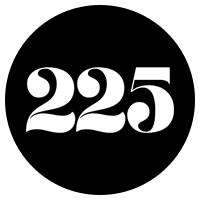Walls and bridges
This time next year downtown will be a lot more colorful. At least, it will if a new arts group has its way.
The collaboration, called BR Walls, is the brainchild of Casey Phillips and Kathryn Thorpe, the formerly California-based principals behind The Force Agency, a consulting firm for branding, marketing, graphic design and events.
With more than three dozen volunteers on board, Phillips and Thorpe aim to coordinate one of the largest-scaled public art efforts Baton Rouge has ever seen.
|
|
Funding and coordinating the creation of both traditional murals and a more modern mobile variety in the form of artistic billboards and banners that can hang over rundown edifices or blank building walls, the group could have its first public art project underway early next month. Attorney and downtown property owner Danny McGlynn is in talks to have several of his available walls painted first.
“Baton Rouge already has a strong arts culture,” Thorpe says. “We just need to bring it out to the public, and we hope a mural will begin that process.”
Along with former Baton Rouge-based artist Clark Derbes, acclaimed painter Saliha Staib has been tapped to co-create the first piece for BR Walls—a large, colorful mosaic in her delicate, abstract style. Set to work outdoors and around the structural features of the edifice-turned-canvas, Staib says she welcomes the difficulties this project presents.
“The challenge is the reason to do it,” says the native of France. “That and it is public, so it is accessible to everyone. Let’s make life in the city. Why keep these walls sad?”
Phillips wants the murals to be thought-provoking and challenging enough to become a creative flashpoint for conversation and collaboration in the community. Producing placeholders for pretty colors is not his only goal.
“Is everyone going to love every single piece of art?” he says. “I certainly hope not.”
Rhaoul Guillaume Jr. of Go Tech Engineering became an early supporter of BR Walls. He sees a citywide mural project as a means for Baton Rouge to brand itself, celebrate its history and look toward the future.
“This is a great opportunity to give our city an identity,” Guillaume says. “It’s not just about, ‘Let’s paint this eyesore.’”
In 1984, the city of Philadelphia set out to do just that by launching a public arts program to combat rampant graffiti. Since then, the effort has evolved to produce more than 3,500 murals.
Jane Golden, executive director of Philadelphia’s Mural Arts program, believes public art holds the power to ignite change within the individuals, organizations and schools that collaborate in their creation as well as benefit surrounding neighborhoods and the city as a whole.
“When someone travels through Philadelphia and sees transformative works of public art in every community, they are greeted with moving images of people’s lives, their history, and their stories that might otherwise go untold,” Golden says. “The fact that murals are created by artists in collaboration with the community speaks to the very human side of mural-making. It is the most democratic form of public art.”
Largely populated, historically rich cities like Philadelphia are not the only places experiencing a renaissance of public artwork. Ludington, a remote township on the western shore of Lake Michigan, counts just 8,000 residents, but in 2003, an arts group there began documenting the history of the city through large-scale murals. Eleven pieces now grace walls in downtown Ludington, with two additional murals on the outer edge of town and more on the way.
The initial focus of BR Walls is downtown, with the goal of raising $25,000 for murals through a Kickstarter campaign. Beyond this initial push and additional downtown projects, Thorpe hopes her group’s murals will inspire other pockets of the city to mount similar public art efforts with only ancillary assistance and support from BR Walls.
Most importantly, Phillips wants some of the artwork to address a wide swathe of social issues, to bridge the city’s racial divide and foster a more creative cross-generational dialog.
“I hope this starts breaking the oppressive, whitewashed mask that too many people wear in the city,” Phillips says. “There’s a ton of color here just waiting to emerge.” brwallsproject.com
|
|
|

